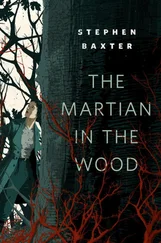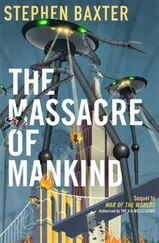She was following her own peculiar agenda, I saw. I really didn’t know what she wanted of me. But it was a chance to spend a little more time with her. What else could I do but accept?
And so she took me to the Catacombs.
* * *
The entrance wasn’t far away. Aboveground there was little to see: a very small chapel, a couple of souvenir and refreshment stalls, a ticket booth, all set in a little scruffy parkland. It was lunchtime and the public areas were locked up, the ticket booth windows covered with CHIUSO notices: this was Rome, after all. But a few bewildered-looking tourists lingered by the refreshment stalls, buying overpriced hot dogs and bottled water.
They watched enviously as Rosa led me to a small stone block, the size and shape of Doctor Who ’s TARDIS. It had a heavy green door, which she opened with a swipe card. This was the public entrance to the Catacombs of Agrippina, Rosa told me. She palmed a switch, and electric light flooded down from strip lights set in the ceiling.
Steps cut down into the dark. Rosa led the way, her heeled shoes clattering on the worn stone steps. When I pulled the door closed after me, it locked automatically. It immediately felt colder. It was a creepy experience, even in the electric light.
At the bottom of the steps I found myself in a gallery. It was narrow enough for me to reach out and touch both walls, and it was tall, perhaps twenty-five feet high, with an arched roof. The walls were notched, with box-shaped cavities cut deep into them. The light was dim, the electric lamps sparsely scattered. There was more light, in fact, coming from the skylight trenches cut down from the surface.
Rosa gave me the guided tour. “People say they’ve never heard of a Saint Agrippina. There never was one, so far as we know. She was probably just a well-off local matron, sympathetic to the Christians’ cause, who gave them the use of her land …”
Burials had given the early Christian community here a problem. Space was always at a premium in Rome. Because of their beliefs the Christians were reluctant to cremate, but land was expensive, even this far out of town. So they began to dig.
“The rock here is tufa,” Rosa said. “Soft, volcanic. It’s easy to work, and it hardens when exposed to the air. And the Romans were used to working underground anyhow. They would dig sewers, waterworks, underground passages for servants to cross from one side of a great villa to another. Many houses would even have a cryptoporticus , an underground recreation area. So when they needed a place to bury their dead the Christians dug, and dug …”
We descended another steep staircase and found ourselves in yet another gallery that stretched on out of sight. The corridors branched, one after another, and the walls were all cut with those deep notches.
I was already thoroughly lost, disoriented. We were alone, and the only sounds were our footsteps and Rosa’s gentle voice, softly echoing. The temperature had settled to a mild chill. Around me those open notches gaped like black mouths — and I had no doubt what they had once held. It was an eerie experience.
“The oldest levels are the highest,” she said. “Which makes sense if you think about it. They just kept digging, down and down. They would cut out family vaults, called cubicula , and these niches are called loculi .”
“Niches for the bodies,” I said, my throat hoarse.
“Yes. Wrapped in linen, or perhaps embalmed. Even popes were buried in the Catacombs. But many of the tombs were pillaged in later centuries. Bones were taken away by desecrators, or by seekers of holy relics, or for reburial. Still, some undisturbed tombs were rediscovered over the last few centuries — perhaps there are more still to find. George, this Catacomb alone encompasses fifteen miles, over four levels. And it is estimated that in all the Catacombs some half a million people were buried, over the centuries.”
Like so many numbers associated with ancient Rome, it was a stunning, impossible figure.
“Look.” She pointed to symbols, painted faintly on the walls. The light was kept low to protect the paintwork, it turned out. “Covert Christian symbols, from the days of repression and persecution. The fish you will recognize. The dove, and here the olive branch, symbolizes peace. The anchor implies resurrection. Oh, here is the famous chi-rho , formed of the first two Greek letters of Christ’s name.” It looked like the letters P and X superimposed. “And here—” Carved above one of the loculi , it was like the simple fish symbol, but two fish touched, mouth to mouth, so that it was almost like an infinity.
“What’s that?”
“The symbol of the Order.” I recognized it from my Internet search. She was studying me. “How do you feel?”
“I’m in a two-thousand-year-old graveyard. A little freaked out.”
“You aren’t worried by the enclosure? The narrow walls, the depth — you don’t feel claustrophobic?”
I thought about that. “No.”
“And if I told you I have more to show you yet — that we will go much deeper …”
“Are you setting me some kind of test, Rosa?”
“Yes, I suppose I am. Something about the way we talked in the cafй … You’ve reacted well so far, and I think you’re ready to see more.” She held out her hand. “Will you come? You’re free to go, whenever you like.”
By now I had come to distrust her obviously calculated touching, the overwhelming feelings it evoked in me. But I took her hand again. “What next — open sesame?”
“Something like that.”
We were standing before an innocent-looking niche, empty as the others. It had a two-fish symbol carved over it. Now, to my surprise, Rosa dug out a swipe card and passed it into a slot hidden inside the stone, up behind the fish. I glimpsed a red light, heard the unexpected humming of electronic gear.
And then, with a stony grind, a kind of trapdoor opened up beneath me — and bright light flooded up into the dusty air. I leaned forward to see. There was another staircase, but this was of polished metal, and it led down to a floor of gleaming tiles.
There was a whole room down there — a modern office, I saw. I glimpsed a desk, a girl behind it in a simple white smock, peering up at us. Fluorescent light glared up gray-white but dazzling bright after the gloom of the Catacomb. I was amazed — even stunned. It was the last thing I’d have expected to see; it was hard to believe it was real.
Rosa was grinning. “Welcome to my underground lair, Austin Powers.”
“Not funny,” I snapped.
“Oh, lighten up.” She turned and descended. I followed.
And so I entered the Crypt for the first time.
* * *
The receptionist sat behind her wide marble desk, smiling at us. I glimpsed a winking rack of small TV monitors behind the surface of the desk, and one red-eyed camera peered directly at me from a wall. It was all quite normal, electric bright, certainly not as chill as the Catacombs. But there was no daylight, of course, not a scrap; it reminded me how far I was underground.
“We don’t use this entrance much,” said Rosa. “There are many ways in, from our shops and offices on the surface — most of them in the suburbs to the west of the Appian Way — though we have a couple of routes that lead to the center of the city. But I wanted to bring you this way. It is the oldest.” She smiled, almost mischievously. “I suppose I wanted to put on a show … Are you okay?”
I simply had no idea what to expect. “I’ve never been in a convent before,” I said.
“You aren’t in one now. Come on.”
We walked toward the wall of the anteroom. Automatic doors slid out of sight. We stepped into a corridor, just as brightly lit as the anteroom.
Читать дальше












